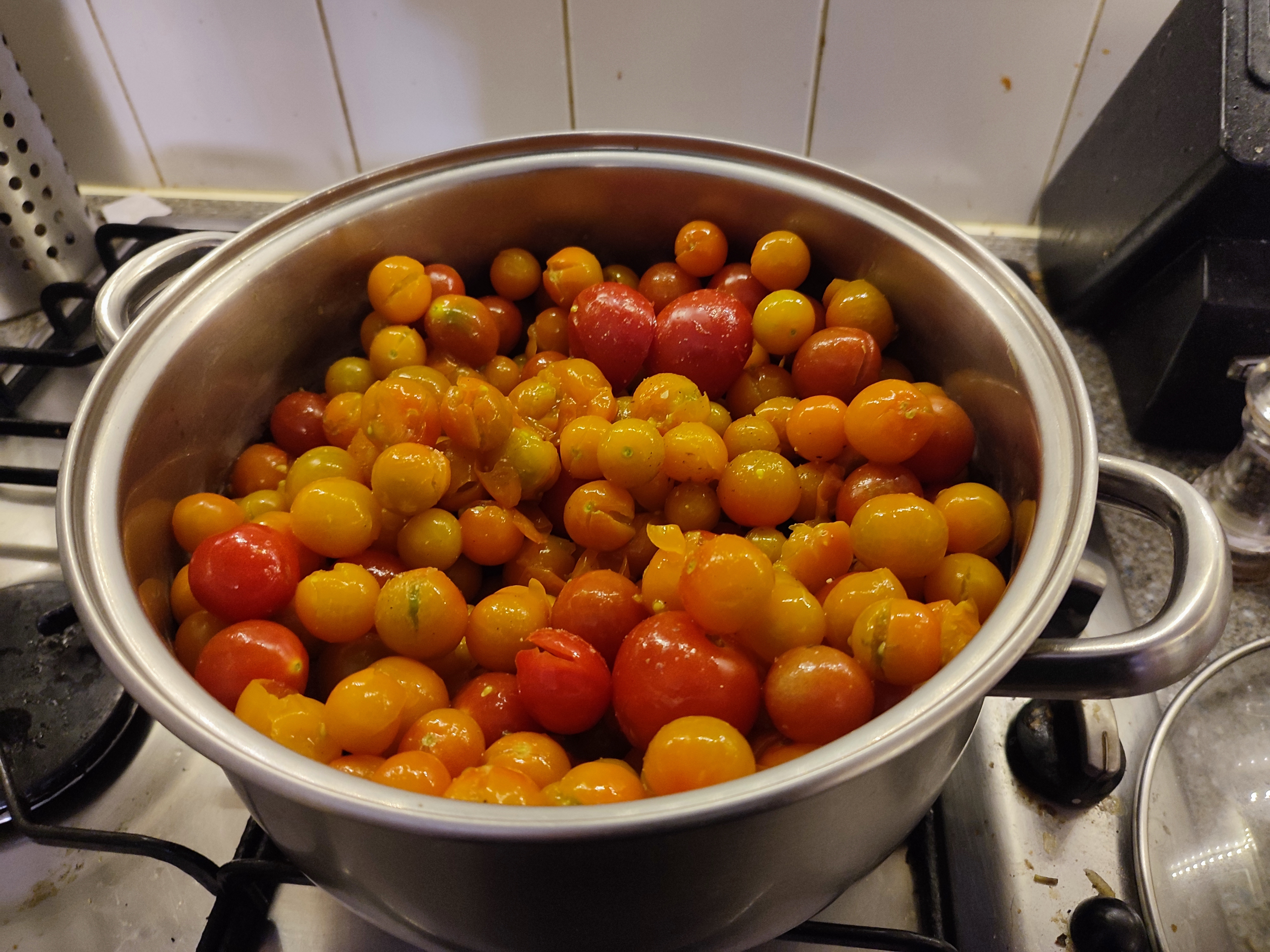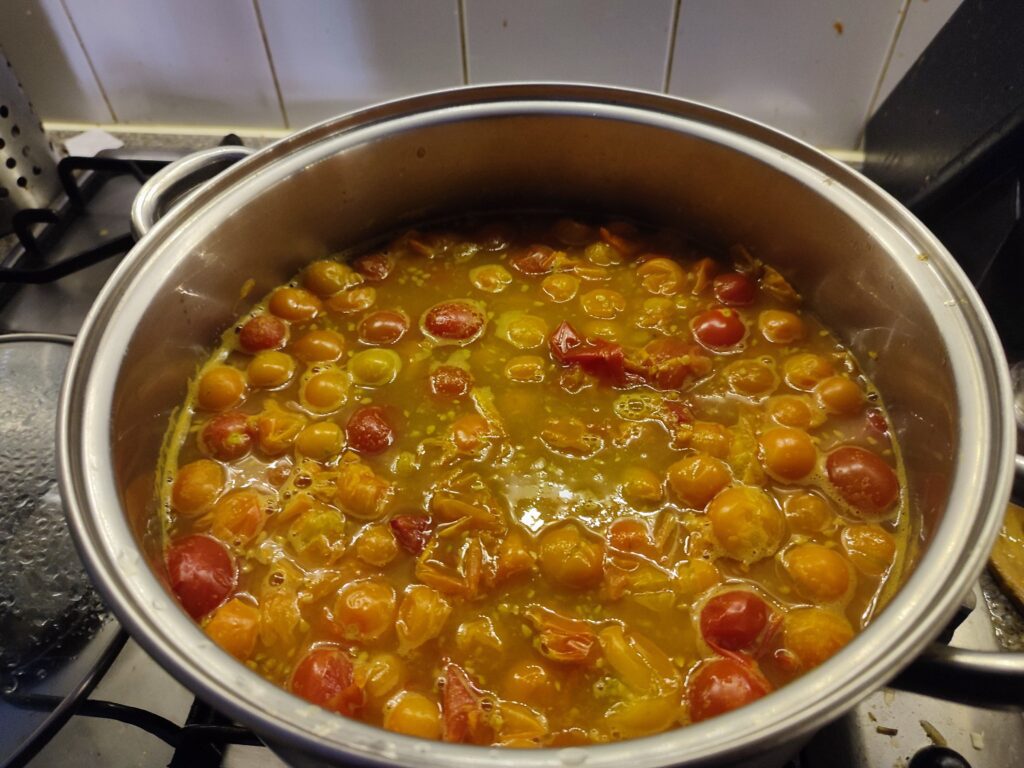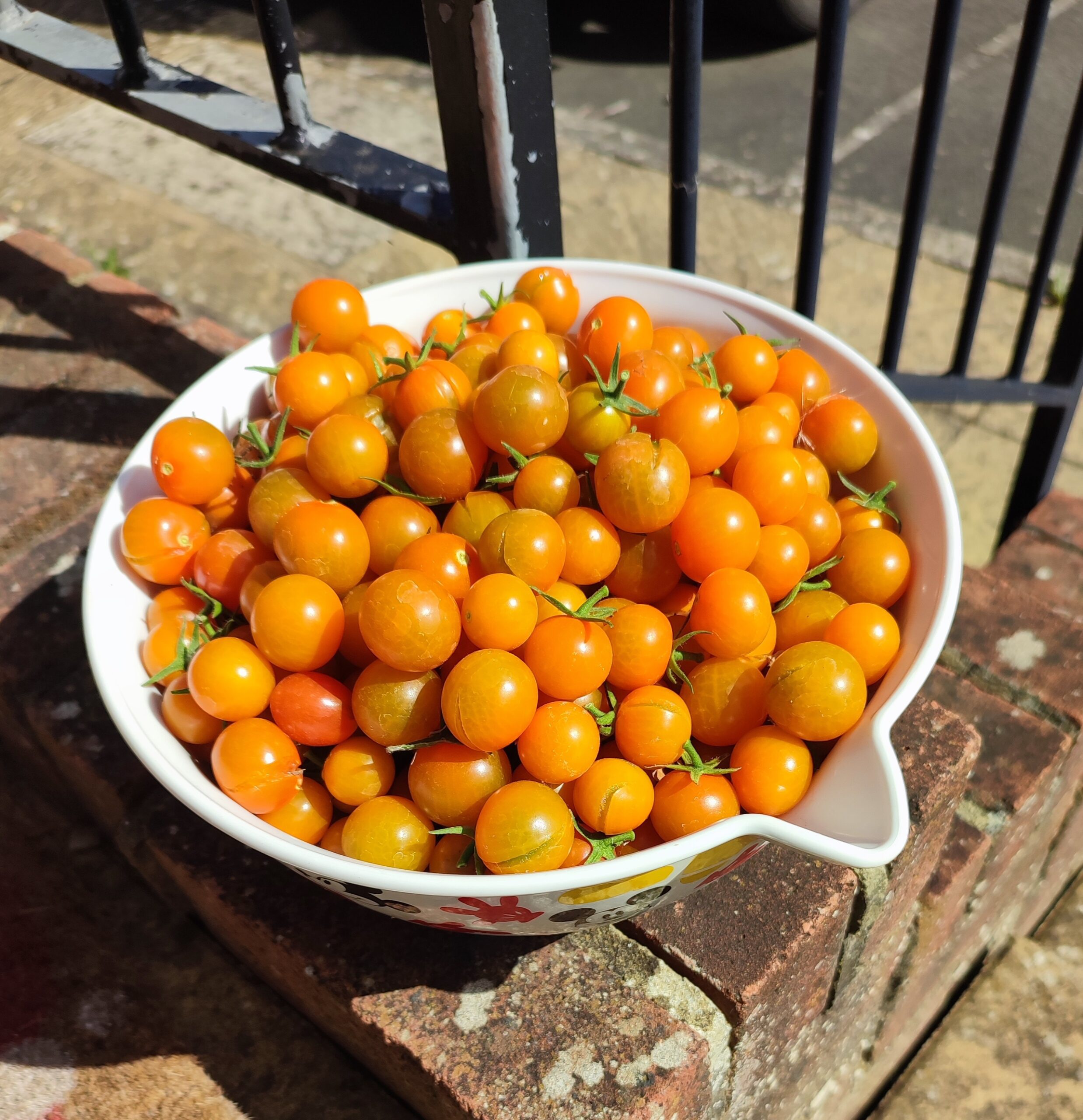My partner Steph and I love growing some veggies. We had no soil in our garden when we moved in which was a real shame but as true veg growers do we managed to find a solution to that minor inconvenience.
We had this tatty, dry and unkept hedgerow hugging the outside wall of our house and thought ‘we can do better than that’. So Steph and her parents spent the day ripping it up and putting it all in the green waste and then we had ourselves a metre deep and about 20m long stretch of earth to play with.
A bit timidly at first, as it is completely exposed to the public and we were worried about it being damaged, we began planting out our vegetables. I have to say that 3 years on now we have not had a single person interfere with our produce so if you are scared of putting that raised bed in the front garden I say go for it!
This year the tomatoes were my pride and joy. Nurtured them inside from seed (don’t have a green house so shed it had to be). Fed the 2 varieties I had once a week after they started fruiting. Sungold and Borghese Plum.
Finally after all this care and attention I had enough to make my Passata.
Making the Passata
So, after picking my first harvest and having a small boost from my in laws garden i had a large bowl full of tomatoes.
Step 1 – Heat them in a Saucepan

Pretty self explanatory really, put them all in a pan and heat them. You want all the juice to run out of them so you are just left with tomato flesh and skin floating around in the tomato water. For me this took about 20 minutes because i had a large pan full and I helped it along by regularly stabbing the tomatoes to release the juices.
Some people like to roast them for 10 minutes with salt, olive oil and garlic. This concentrates the flavour nicely and gets rid of the water inside. Could be the way to go for a smaller batch but because I had a bit of a glut I went for the boiling option.

Step 2 – Pulp the Tomatoes
Once you have got to the stage of tomatoes floating on the top of their own juices grab a slotted spoon and remove the toms from the liquid. Do not throw away the juice! I made myself a lamb casserole out of the tomato water and it was the best i’d ever had.
Now you have to pulp the soft tomatoes to try and get rid of the skin and seeds and get every last bit of pulp you can out of them. You can use a sieve and the back of a spoon or rolling pin but considering I think I’m going to be growing tomatoes every year I can I decided to invest in a rotary food mill. Only a small investment considering I’m hoping it lasts for years and I wanted to process my tomatoes to the full.

Step 3 – Preserving
Because I have turned in to a fairly passionate foody in the last few years I have bought myself a chest freezer to put in the shed. Didn’t cost too much as I bought it second hand off gumtree and it is the simplest way to preserve. Wack it in a tub, wait to cool and put in freezer. Done.
If however that is not an option for you then there is another way. You can store it in jars using the water bath method. Place your cooled passata into sterilized jars leaving a couple of centimetres space at the top and add a teaspoon of citric acid or lemon juice. This extra bit of acid just ensures that you will not get any rogue bacteria in your sauce. Wipe the jars clean of any spills from filling them up and then screw the lids on but not too tight. Then place them in a large pan of water and make sure there is a good few centimetres of water over the top so they are completely covered, bring the water to the boil and then boil for 35 minutes. Turn off the heat and then leave to cool. Take them out of the water and then leave for at least 8 hours and then you should have some lovely jars of preserved passata.
Step 4 – Customise
The beauty part of making passata is that its a blank slate. Just pure tomatoey goodness, so you can use it for a massive range of dishes. For me the first dish was I added in some chillies and just a bit of salt to make the most delicious sauce for a pasta and bacon dish that Steph and I love. Just boiled down the sauce in a wide open pan to thicken and add the salt to taste when it is the consistency you want.
I had three tubs left to go in the freezer to preserve my summer crop and plans for those include a basil sauce, a lasagne sauce with oregano, I might do a panzanella later on in the summer who knows. The world of tomatoes is now my oyster!



